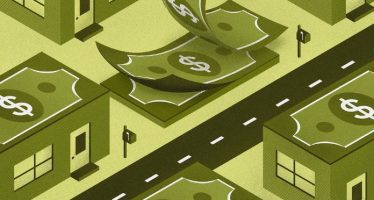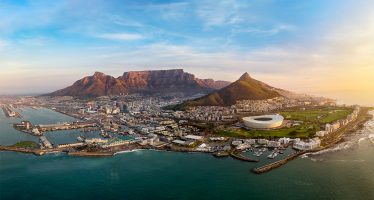India: Carefully Seizing the Day
 India’s aspiration of rivalling China for regional political and economic supremacy may seem to have been ruined by the Corona pandemic’s intervention. Prime Minister Narendra Modi’s stated goal of growing India into a $5 trillion economy appears more distant than ever. Of all the world’s major economies, India has suffered most in the wake of the viral outbreak which prompted the government to order and maintain an exceptionally strict national lockdown. The International Monetary Fund (IMF) expects the country’s GDP to contract by 10.3 percent. Before the outbreak, India enjoyed the tail end of a sustained growth spurt and was slated to add 4 percent or more to its output in 2020.
India’s aspiration of rivalling China for regional political and economic supremacy may seem to have been ruined by the Corona pandemic’s intervention. Prime Minister Narendra Modi’s stated goal of growing India into a $5 trillion economy appears more distant than ever. Of all the world’s major economies, India has suffered most in the wake of the viral outbreak which prompted the government to order and maintain an exceptionally strict national lockdown. The International Monetary Fund (IMF) expects the country’s GDP to contract by 10.3 percent. Before the outbreak, India enjoyed the tail end of a sustained growth spurt and was slated to add 4 percent or more to its output in 2020.
Earlier this month, market watchers expressed disbelief when the Modi Administration unveiled, belatedly though with great fanfare, its emergency support package, promising to inject all of $10 billion into the $2.7 trillion economy to encourage consumer spending and help cash-strapped states. The amount represents, if anything, a rounding error and only stands out for its diminutive size.
In her presentation, Finance Minister Nirmala Sitharaman emphasised the government’s unwavering commitment to fiscal prudence. However, this year’s budget deficit is likely to hit 13 percent of GDP as revenues collapse. Sitharaman did boost capital expenditure with an extra $3.4 billion for infrastructure projects. Meanwhile, states can tap a $1.6 billion credit facility to catch up on outstanding bills and other unmet liabilities.
Shopping Spree
Keeping with tradition, New Delhi also came up with an intricate scheme to permit some civil servants and workers at state-owned companies to use their holiday and travel allowances for a spending spree instead. Government employees may also access a Rs10,000 ($135) credit line, payable in ten easy instalments, to spruce up the festive season.
Almost incessantly, New Delhi expresses hope and confidence that the battered economy may soon return to buoyancy, exuberant or otherwise, as the daily infection rate earlier this week dropped to a 3-month low. A government panel of experts said that the outbreak has now peaked and may be fully checked by February. However, independent observers cast doubt on the rosy picture. At the Indian Institute of Management, Health Economist Rijo John wonders how anybody can say that the pandemic is on the wane: “We may have peaked for now, but that doesn’t exclude the possibility of future surges.”
The Indian Council of Medical Research concluded in August that about 6.6 percent of the country’s 1.4 billion inhabitants had already been infected by the novel virus. Most analysts agree that probably only 5 percent of infections are confirmed and reported. As the pandemic spreads outwards from the cities into the countryside, the presumption is that official numbers may continue to decline whilst the number of unreported cases increases.
The Modi Administration is anxious to step on the economic accelerator and cash in on China’s troubles. India makes no secret of its ambition to replace its northern neighbour and nemesis as manufacturing hub and starting point of rerouted global supply chains. The country seeks to leverage its comparatively good credentials in governance, transparency, and the rule of law. Though by most Western standards India may still have some catching up to do, the country is eons ahead of the secretive Middle Kingdom and its opaque laws and peculiar corporate ethics.
India’s biggest pull is, of course, its regionally unrivalled strength in engineering, bristling as it does with untold cohorts of smart, talented, and eager graduates who deliver stellar work for a fraction of the cost in Europe or the US. Not confined behind a draconian firewall or deprived from participation in lively debates with their peers, Indian engineers are much more part of the globalised world than their Chinese colleagues.
Urgency
The debate about the future of economic policy has gained an extra layer of urgency after forecasters warned that an estimated 200 million Indians may slip back into poverty, erasing the social advances of two decades. The government has so far been reluctant to prop up domestic demand, which represents 60 percent of GDP, via a more aggressive fiscal and monetary response.
Contrary to central banks in other major markets, the Reserve Bank of India (RBI) has pursued a quantitative easing ‘lite’ policy and repeatedly resorted to ‘Operation Twist’ – now in its fourth iteration – by buying up government bonds with long maturities and selling those with short tenors in an attempt to drive down yields. This form of yield control was pioneered by the US Federal Reserve in the 1960s and rediscovered during the global financial crisis of the late 2000s. The advantage these swaps is that their net impact on the bank’s balance sheet is zero.
Under Governor Shaktikanta Das, the RBI has become somewhat of a cash cow for the government by funding the gaping budget deficit through higher dividend pay outs and the transfer of excess reserves – raising questions about the bank’s independence. Former RBI deputy governor Viral Acharya views the transfers as the ‘creeping monetisation’ of the deficit and quit his job last year over the undermining of the bank’s independence.
Development Economist Jayati Ghosh of the Jawaharlal Nehru University in New Delhi is not optimistic: “This is probably the worst situation Indian has been in since independence. People have no money, and no-one is going to invest when there is no market.” Ghosh fears that the country may lose its cherished place as the world’s fifth largest economy after GDP slumped by 23.9 percent in Q2.
Though many of India’s problems predate Modi, his administration has done little to noticeably improve the business climate. Whilst the country has steadily moved upwards on the World Bank’s Ease-of-Doing-Business ranking, fundamental issues such as complex land ownership legislation, restrictive labour laws, and the staggering lengths of red tape that straitjacket even the simplest of business propositions have remained largely unaddressed.
Modi’s impulsiveness has compounded the problems. His well-advised but ill-executed currency reform (or purge) that invalidated 90 percent of the country’s paper currency in 2016 was meant to stamp out corruption and encourage digital payments. Instead, it left people and businesses strapped for cash and severely disoriented – and steered the economy towards the doldrums.
Ticket to Ride
Likewise, Modi’s imposition of a strict national lockdown on March 24 instantly caused a Great Migration of city dwellers who feared they might starve whilst imprisoned in slums and decided to flee the urban death trap and head back to their villages, spreading the coronavirus as they walked, pedalled, or hitchhiked to the countryside. Most economist consider this snap-decision the root cause of India’s twin crises – the 8 million recorded covid-19 cases and the economic meltdown.
Yet, the Modi Administration is not entirely without options. Standard & Poor’s just reaffirmed India’s sovereign credit rating at BBB- with a stable outlook – the lowest classification that still is investment grade – and expects the country to bounce back vigorously in 2021. With China much out of favour in the United States – and unlikely to benefit from a possible Biden victory – and increasingly unpopular in Europe, India holds a golden ticket.
The country is unreservedly popular, deemed inoffensive, and considered a natural friend and ally by many in the US and Europe. Whilst Modi does possess a recalcitrant streak, his shenanigans bear no comparison to those of the iron-fisted authoritarians of Russia and China. If he plays his card(s) right, India’s moment may arrive before long. That is, of course, an ‘if’ of monumental size.
You may have an interest in also reading…
Bonds: Name of the Game for Cool (and Resilient) Operators
US corporate bonds certainly lack the thrill of that other famous Bond, James. But when it comes to strength and
Otaviano Canuto: More Than One Coronavirus Curve to Manage – Infection, Recession and External Finance
Flattening Coronavirus Curves – Otaviano Canuto First appeared at the Policy Center for the New South The global reach of
South Africa and the Struggle for Reform
Widely considered a bellwether for emerging market sentiment, South Africa’s rand has been on a dizzying rollercoaster ride, seesawing on


















































































